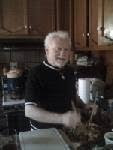The "Energy Drinks" controversy
Products Need Warning Labels, Scientist Says; Industry Contends They're Safe to Drink
By Kathleen Doheny
WebMD Health NewsReviewed by Louise Chang, MDSept. 24, 2008 --
Caffeinated energy drinks that promise super alertness -- and sometimes imply better sports performance -- should carry labels that specify their amount of caffeine, says a Johns Hopkins University scientist.
Drinks with the highest caffeine content should also warn of potential health dangers, says Roland Griffiths, PhD, a professor of psychiatry and neuroscience at Johns Hopkins University School of Medicine, Baltimore, and senior author of a new report on the beverages.
"Many of these drinks do not label the caffeine content," he says, and some energy drinks contain as much caffeine as found in 14 cans of soda.
The industry begs to differ, with spokespeople pointing out that most "mainstream" energy drinks contain the same amount of caffeine, or even less, than you'd get in a cup of brewed coffee. If labels listing caffeine content are required on energy drinks, they should also be required on coffeehouse coffee, says Maureen Storey, PhD, a spokeswoman for the American Beverage Association.
Energy Drinks: The Back Story
Since Red Bull, the first energy drink to hit the U.S. market, launched in 1997, the market has boomed, Griffiths says, now totaling at least $5.4 billion a year in the U.S. Hundreds of brands are available.
Although the FDA limits the caffeine contents of cola-type soft drinks to 71 milligrams per 12 fluid ounces, no such limit is required on energy drinks, Griffiths tells WebMD.
"Makers of so-called "energy" drinks generally market them as dietary supplements," says Siobhan DeLancey, an FDA spokesperson. Dietary supplements are regulated differently than food. The FDA does not approve or review the products before they are marketed.
Energy Drinks: Caffeine Content
Griffiths and his colleagues contacted more than two dozen makers of energy drinks, asking for caffeine content. Here are some of the findings:
(The caffeine content is in milligrams per serving. Although serving sizes vary, Griffiths contends that most people will drink the entire can, whatever the number of ounces.)
Red Bull: 80 milligrams per 8.3-ounce serving
Tab Energy: 95 mg per 10.5-oz serving
Monster and Rockstar: 160 mg per 16-oz serving
No Fear: 174 mg per 16-oz serving
Fixx: 500 per 20-oz serving
Wired X505: 505 mg per 24-oz serving
In comparison, according to Griffiths:
Brewed coffee: 200 milligrams per 12-oz serving
Instant coffee: 140 mg per 12-oz serving
Brewed tea: 80 mg per 12-oz serving
Mountain Dew: 54 mg per 12 oz. serving
Dr. Pepper: 41 mg per 12-oz serving
Pepsi Cola: 38 mg per 12-oz serving
Coca-Cola Classic: 34.5 mg per 12-oz serving
Canned or bottled tea: 20 mg per 12-oz serving
Some of the energy drinks have lower caffeine contents, Griffith says. Among the lower doses:
Bomba Energy has 75 mg per 8.4-oz serving
Whoop Ass has 50 mg per 8.5-oz serving
Energy Drinks: The Report
Energy drinks are popular with teens and young adults, Griffiths found in his research. In a 2007 survey of 496 college students, 51% said they had consumed at least one energy drink during the past month.
Bad reactions to energy drinks have been reported to U.S. poison control centers, Griffiths writes in the report, published in the journal Drug and Alcohol Dependence. From 2002 to 2004, he says, 41 cases of caffeine abuse from caffeine-enhanced beverages were reported.
In a report of nine cases of adverse reactions to the energy drink Redline, the patients reported nausea and vomiting, high blood pressure, tremors, dizziness, and numbness.
Data also suggest those who drink the energy drinks may combine them with alcohol, reported Griffiths. In the college student survey, 27% said they mixed alcohol and energy drinks at least once in the past month. One danger to that: Users may feel alert enough to drive, even if they are inebriated.
Griffiths worries that the energy drinks are sometimes "gateways" to use of other substances. In one study, college students who used energy drinks were more likely to later use stimulants for recreational use, he says.
Energy Drinks: Industry View
Storey, of the American Beverage Association, took exception with Griffiths' view. "It's a review, not a study," she says of his report. "We need to be careful about taking too much out of one review. He looked at some studies."
In a statement issued by the association, officials note that most "mainstream" energy drinks typically contain half the caffeine found in regular coffeehouse coffee. A 16-oz cup of coffeehouse coffee has about 320 milligrams of caffeine, according to the statement, while a typical 16-oz mainstream energy drink has 160 mg.
If labels should be required on energy drinks, Storey says, coffeehouse coffee should also be required to label caffeine content.
Most companies market their energy drinks responsibly, the association contends. Only a few companies give the products illicit or suggestive names (such as Cocaine, an energy drink that triggers controversy).
"Energy drinks can be part of a balanced lifestyle when consumed sensibly," the statement reads.
Energy Drinks: Griffiths' Response
Griffiths stands by his proposal to require warning labels on the energy drinks with the highest caffeine content, although he is not certain what that threshold should be.
There's a difference, he says, in the marketing of energy drinks and marketing of traditional caffeine beverages. The energy drink makers, he says, ''are marketing to vulnerable populations."


0 Comments:
Post a Comment
<< Home